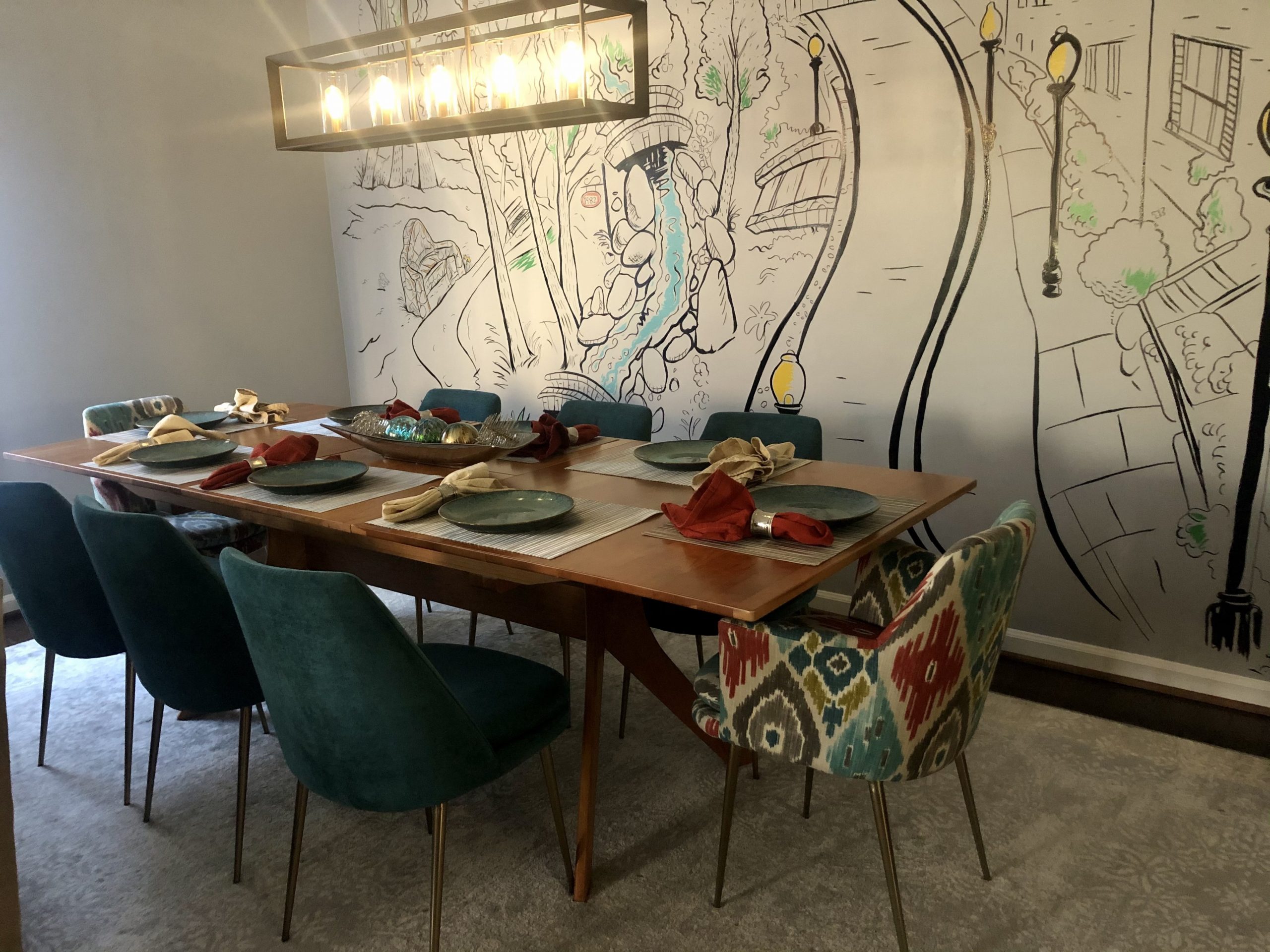
Nov 23, 2020 | Action, Authenticity, Courage, Freedom, Intention, Women
 I got married a few weeks ago on October 10. As I fell asleep the night before, I meditated on an intention to be fully present on our wedding day. You know how weddings go – they’re chock full of endless tasks and details and a flurry of activity. I knew this was the reality and I wanted to let go and be fully present with Lyn, my wife-to-be, and our beautiful, precious ceremony.
I got married a few weeks ago on October 10. As I fell asleep the night before, I meditated on an intention to be fully present on our wedding day. You know how weddings go – they’re chock full of endless tasks and details and a flurry of activity. I knew this was the reality and I wanted to let go and be fully present with Lyn, my wife-to-be, and our beautiful, precious ceremony.
As I drifted off, I wondered what it would feel like tomorrow when the day I had longed for finally arrived. I had imagined it a thousand times, playing the scenes over and over in my mind.
As I awoke that morning, what I hadn’t considered was this feeling that now washed over me – the deepest sense of gratitude. “I get to do this,” I thought. Just six years ago it wouldn’t have been possible to marry Lyn, to bond our love and commitment in the formal union of marriage.
I sat reflecting on those who came before me – those who advocated for this right of equality and were persecuted, prosecuted, and even gave their lives for it. The very freedoms and rights they fought for; many never were able to live it themselves. And here I sit, in my den, cozy under a blanket, sipping my coffee on my wedding day…I get to do this.
Audre Lorde, Marsha P. Johnson, Sylvia Rivera, Billie Jean King, Harvey Milk, Jack Baker, Michael McConnell, Edith Windsor, Jim Obergefell, Mary Bonauto, Justice Ruth Bader Ginsburg, Justice Anthony Kennedy, Evan Wolfson, Evelyn and Walter Haas, Jr., and so many, many more.
I carried their spirit, perseverance, and legacy with me through the day, sustained in gratitude, committing to do far more than simply hold this feeling – to persist as they did, take action to ensure common humanity, freedoms, and rights for LGBTQ people. There is so much work that remains to be done.
Today, heading into Thanksgiving week 2020, where our pandemic world is turned upside down and inside out, Lyn and I have decided how we’ll celebrate the holiday this year. In the absence of not being able to gather with family and friends as we traditionally do, we’re preparing our dining table with place settings reserved for those whom we want to honor, celebrate, and give thanks. The seats will be taken, not only by champions who fought for LGBTQ freedoms and rights, but also by those who led the way for women’s rights, civil rights, and for democracy, equality, and inclusion.
It will be a Thanksgiving like none other…maybe one that’s here to stay.
 Hi, I’m Jeanie Duncan. I work with individuals and organizations as a transformation partner to help them unlock their Truth, discover authentic value, and create meaningful impact in the world. I believe when we are truly aligned with our purpose, we can live and perform at our highest potential. With over 25 years of experience as an executive, CEO, consultant, coach, and writer, I offer strategic, knowledgeable, and experienced guidance for those who are ready to take the courageous leap toward true transformation.
Hi, I’m Jeanie Duncan. I work with individuals and organizations as a transformation partner to help them unlock their Truth, discover authentic value, and create meaningful impact in the world. I believe when we are truly aligned with our purpose, we can live and perform at our highest potential. With over 25 years of experience as an executive, CEO, consultant, coach, and writer, I offer strategic, knowledgeable, and experienced guidance for those who are ready to take the courageous leap toward true transformation.

Jan 25, 2012 | Leadership

In a feature article of The Nonprofit Quarterly – The Inclusive Nonprofit Boardroom: Leveraging the Transformative Potential of Diversity – authors Patricia Bradshaw and Christopher Fredette shared highlights of a study they conducted of Canadian nonprofit organizations examining how they made sense of diversity, and what they saw as best practices for enhancing it. Their findings and reflections reveal the potential in harnessing the power of diversity in organization leadership.
Their focus was on diversity and the dynamics of inclusion, versus assimilation or differentiation, defined as the degree to which members of diverse and traditionally marginalized communities are present on boards and meaningfully engaged in the governance of their organizations.
I believe that a commitment to diversity and inclusiveness among organization leadership is vitally important. And my observation is that this work is challenging, complex, and requires dedication and commitment over the long-term. Many organizations, as they attempt to bring greater diversity to their board and staff, have experienced a decline in organization performance and forward progress. I’ve witnessed the changes creating tension, conflict, and division. I conclude that this is due in great part to two factors: 1) a misunderstanding of what it truly means for an organization to embrace diversity and inclusion, and 2) the lack of sincere, consistent, long-term commitment to and execution of a diversity plan.
From the study, interviewee Kristina Bourne described an environment of inclusion as “a culture in which every individual is valued as a vital component of the organization’s success and competitive advantage.” Bourne describes this concept as an alternative to seeing diversity as an end in itself or something to be managed or tolerated.
Reflecting on their interviews, they found that informants were talking about two different types of inclusion — which Bradshaw and Fredette termed “functional inclusion” and “social inclusion”— and about how the two can work together to create something transformational.
The article describes functional inclusion as characterized by goal-driven and purposeful strategies for the increased inclusion of members of diverse or traditionally marginalized communities. Social inclusion, in contrast, is characterized by the participation of members of diverse groups in the interpersonal and cultural dynamics of the board, based on meaningful relational connections. Unlike the functional notions of inclusion, social inclusion also stresses the value derived from social standing and relational acceptance within the context of the board.
A commitment to and healthy balance of both social and functional inclusion is required for success. Merely recruiting board members from diverse communities and expecting positive outcomes is not enough. As you consider how your nonprofit’s board will evolve to embrace diverse, inclusive leadership, consider the following:
- Your organization’s leadership must be reflective of the diverse communities and constituents you serve. It’s simply sound business practice.
- Be prepared for the complexities and challenges of becoming a more inclusive organization.
- Include your commitment to diversity and inclusiveness as a core part of your organization’s strategic plan. Approach the work with a sincere and genuine commitment to execute this core strategy consistently over the long-term. It must become a part of your organization’s DNA.
- Begin with simple actionable steps, with people you know. Progress slowly and steadily, remembering that relationship building takes time.
- Once on board, support new members through transitional phases of board entry, and authentically engage them in social aspects that build strong relationships and board cohesion, such as mentorship, orientation practices, and other group-building processes like retreats and workshops.
- Ensure that yours is a strong and welcoming organizational culture, helping new members feel comfortable and at ease.
- Hold meetings at times and in locations where everyone could attend (in locations with elevators in order to be accessible to those with physical disabilities, or on days that accommodated religious holidays, for example),
- Exhibit sensitivity regarding the use of humor and choices of subject matter that could marginalize or silence people, or exhibit unconscious privilege.

 I got married a few weeks ago on October 10. As I fell asleep the night before, I meditated on an intention to be fully present on our wedding day. You know how weddings go – they’re chock full of endless tasks and details and a flurry of activity. I knew this was the reality and I wanted to let go and be fully present with Lyn, my wife-to-be, and our beautiful, precious ceremony.
I got married a few weeks ago on October 10. As I fell asleep the night before, I meditated on an intention to be fully present on our wedding day. You know how weddings go – they’re chock full of endless tasks and details and a flurry of activity. I knew this was the reality and I wanted to let go and be fully present with Lyn, my wife-to-be, and our beautiful, precious ceremony. Hi, I’m Jeanie Duncan. I work with individuals and organizations as a transformation partner to help them unlock their Truth, discover authentic value, and create meaningful impact in the world. I believe when we are truly aligned with our purpose, we can live and perform at our highest potential. With over 25 years of experience as an executive, CEO, consultant, coach, and writer, I offer strategic, knowledgeable, and experienced guidance for those who are ready to take the courageous leap toward true transformation.
Hi, I’m Jeanie Duncan. I work with individuals and organizations as a transformation partner to help them unlock their Truth, discover authentic value, and create meaningful impact in the world. I believe when we are truly aligned with our purpose, we can live and perform at our highest potential. With over 25 years of experience as an executive, CEO, consultant, coach, and writer, I offer strategic, knowledgeable, and experienced guidance for those who are ready to take the courageous leap toward true transformation. 

